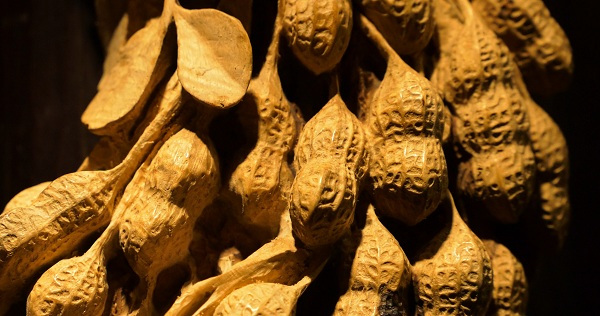Yujiang wood carving

The delicate Yujiang wood carvings. [Photo/chinadaily.com.cn]
Yujiang wood carving, part of Jiangxi's fourth batch of intangible cultural heritages from 2013, is known globally for its long history and exquisite craftsmanship.
Yujiang district in Jiangxi's Yingtan now also enjoys the reputation of the "hometown of wood carving".
The history of Yujiang wood carving dates back to the Tang (618-907) and Song (960-1279) dynasties. The technique flourished during the Ming (1368-1644) and Qing (1644-1911) dynasties.
Buddhism was introduced to China during the Tang and Song dynasties and a lot of temples sprung up. People used to use wood to carve the figure of Buddha and enshrine them in their homes.

The carved wooden peanuts look just like the real thing. [Photo/chinadaily.com.cn]
Later, in the Ming Dynasty, wood carving was further applied in house building, and ornamented features such as beam columns, cornices, handrails and lintels.
During the late Qing Dynasty, Yujiang wood carving gradually developed from an architectural decoration to a carving craft. The delicate carvings could be seen on items used daily for general purposes, such as armchairs and camphor chests.
The stories depicted by Yujiang wood carvings are inspired by folk life and customs, myths and legends, folk stories and landscapes, flowers and birds, fish and insects - as well as auspicious birds and animals.
The Yujiang wood carving industry has seen rapid development since the 1970s. Zhang Guoxi and Tong Shengfu, two wood carving masters, were appointed as the representative inheritors of Yujiang wood carving by the Department of Culture of Jiangxi Province in 2016.








